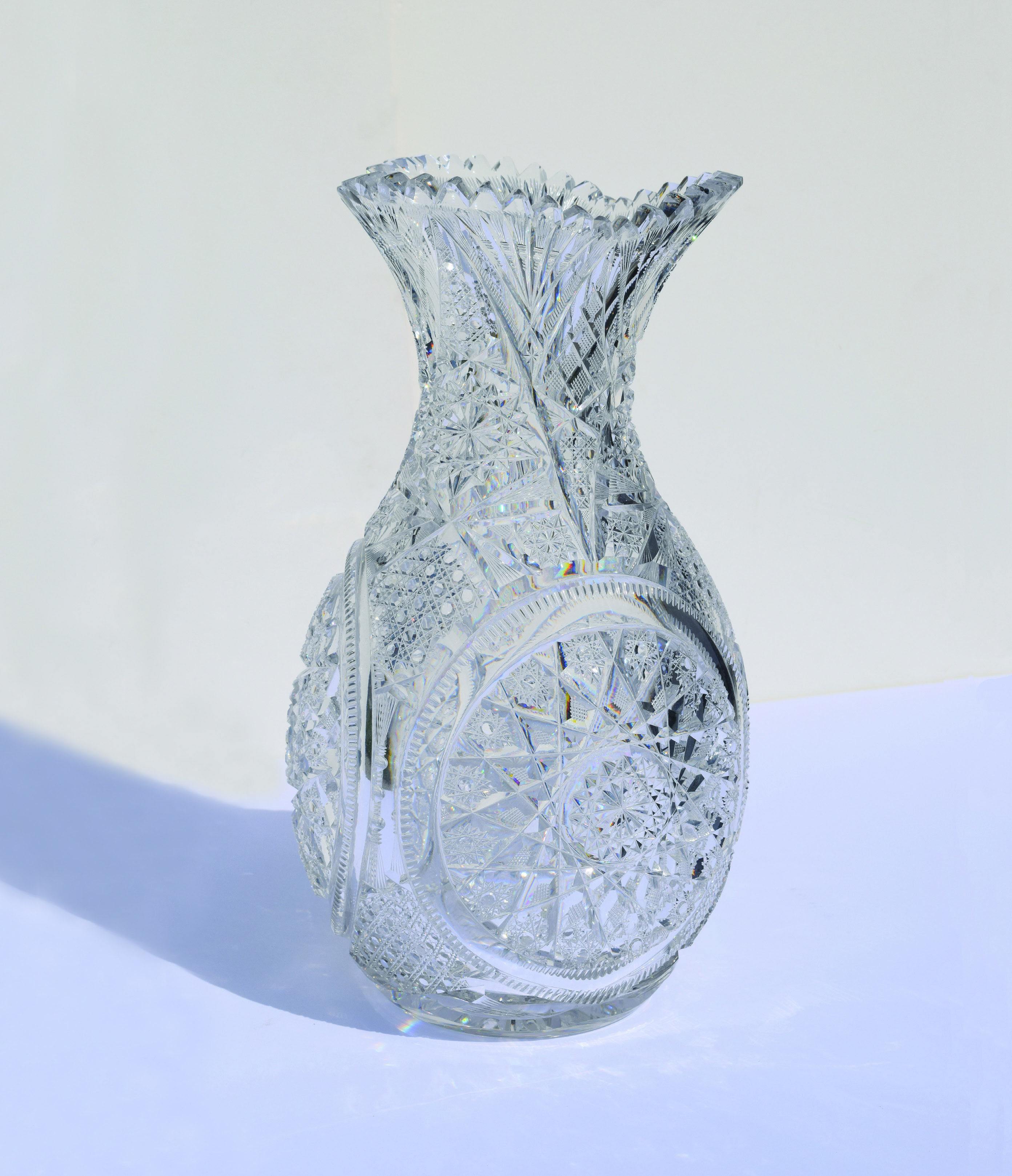Item Composition
Glass
Item Medium
Glass
Item Origin
St. Charles, Illinois
Item Duration at Mansion
Temporary
Summary
Cut glass, 14 × 7 ½ inches Otto W. Heinz (1882, Buckow, Germany–1967, St. Charles, Illinois), designer and cutter. Collection of St. Charles History Museum, St. Charles, Illinois
Item Composition
Glass
Item Medium
Glass
Item Origin
St. Charles, Illinois
Item Duration at Mansion
Temporary
In 1910, Otto Heinz carefully cut an intricate pattern on the blank surface of the large glass vase that he was planning to present as a wedding gift to his June bride, Elizabeth Koenneker. The success of the piece depended upon the precision with which he held it against the grinding stone, which revolved on a machine called a frame, following a pattern of fine red lines drawn on the crystal vase.
Otto was an expert cutter who designed his own patterns. He also developed a method for polishing cut glass pieces by dipping them in acids rather than buffing them with fibers. This made the glassware more brilliant and crystal clear. At the time, the popularity of "brilliant cut glass," as such ornately cut pieces were called, was at its peak.
Otto was one of three brothers—Emil, Richard, and Otto—who owned and operated the Heinz Cut Glass Company in St. Charles. The Heinz brothers worked in the Chicago factories of Pitkin & Books and the American Cut Glass Co. before launching the Monarch Cut Glass factory with Herman and Frank Kotwitz in 1901. A year later, they bought out the Kotwitz brothers and operated in Chicago as Heinz Bros. In 1905, when a committee of prominent St. Charles businessmen offered incentives to move their works, the brothers moved into a modern two-story factory building in the small Kane County town.
The Heniz Cut Glass Company became one of the largest cut glass cutting factories in the Midwest, selling their products throughout the United States and Europe. Their line included more than 600 items of glass tableware—ranging from perfume bottles and tumblers to lemonade sets and large punch bowls. Most of the heavy glass blanks they used were purchased in Europe. At its peak, about 100 cutting frames were in use, with the factory employing about 90 persons.
In 1913, as the fashion for heavy cut pieces waned, Heinz began cutting and decorating thinner, more delicate American-made glass tableware and mirrors. After World War I, they closed their factory and operated with a small staff in rented quarters until shuttering the business in 1927.
Item Composition
Glass
Item Medium
Glass
Item Origin
St. Charles, Illinois
Item Duration at Mansion
Temporary


